How to choose floor tiles
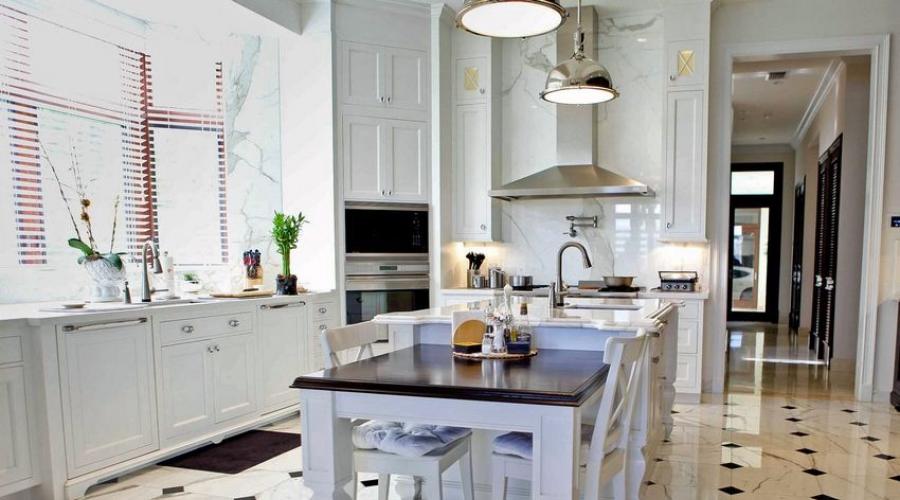
How to choose floor tiles: in this article on the site we will look at how to choose floor tiles kitchens and corridors and how to lay tiles on the floor with your own hands. Due to its aesthetic appearance and unique properties, the undisputed leader in finishing materials is floor tiles: photos of modern interiors clearly demonstrate this. But how to choose the right tile among the many different offers on the market? Buying a floor covering is not an easy task that requires a careful approach to its solution. Indeed, to create not only a stylish, but also a high-quality interior, it is necessary to take into account the technical characteristics and features of this material. After reviewing the article and the proposed photos of floor tiles in the interior, you can easily make an independent choice.
Ceramic tiles are one of the most practical types of flooring.
Floor tiles: advantages and disadvantages
The tile has a number of advantages over other finishing materials:
- hygiene - tiles are considered the best finishing material for rooms with a high level of pollution. The smooth and even surface is easy to clean, does not accumulate dust and tolerates washing even with the use of aggressive household chemicals. The latter is a big plus, since the floor in the kitchen and hallway is constantly exposed to moisture, which can contribute to the appearance of mold and harmful bacteria;
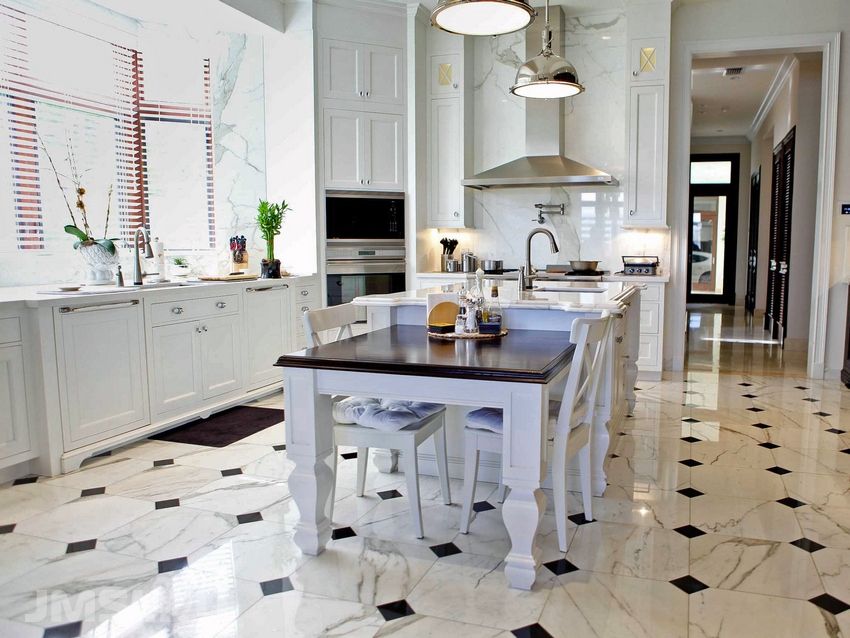
The modern interior of the kitchen used floor tiles of different sizes and colors.
- strength - with high-quality laying, the tile is able to withstand significant loads from impacts. In addition, it is not subject to mechanical damage and loss of color;
- durability - a well-placed tile can last you up to 50 years, without losing its visual appeal;
- moisture resistance - not afraid of high humidity and even flooding;

The combination of black and white tiles - a timeless floor design option
- fire resistance - ceramic tiles do not react in any way to an increase in temperature and will not burn in a fire;
- ease of restoration - in case of damage, there is no need to change the entire floor covering. You can easily replace a separate section, returning the interior to its original appearance;
- environmental friendliness - ceramic tiles are a material that is safe for health;
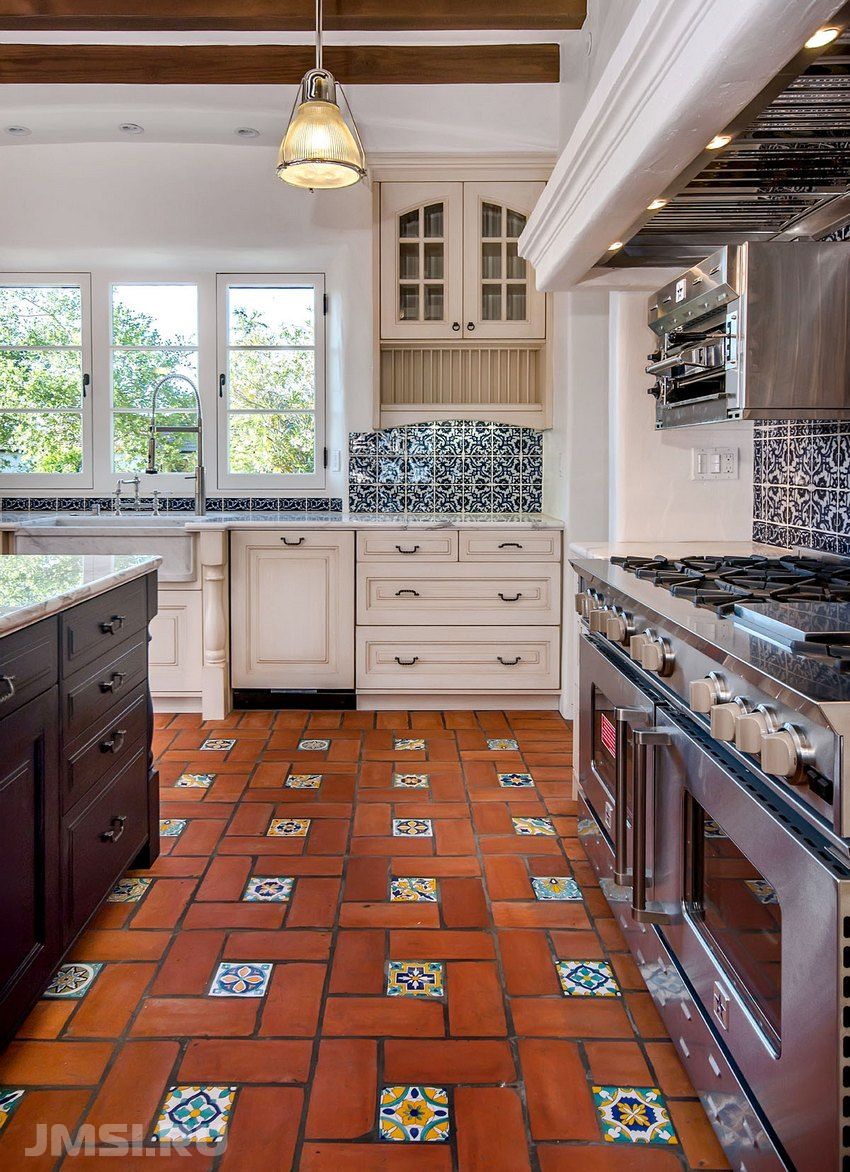
floor tiles with a bright ornament will become an original decoration of the interior
- a large selection - numerous options for colors, patterns, sizes, as well as a variety of tile textures make it possible to create not only a practical, but also a visually attractive design.
Specialized online resources will help you get acquainted with a variety of photos of floor tiles for the hallway. Prices for this material can be found on the websites of hardware stores.
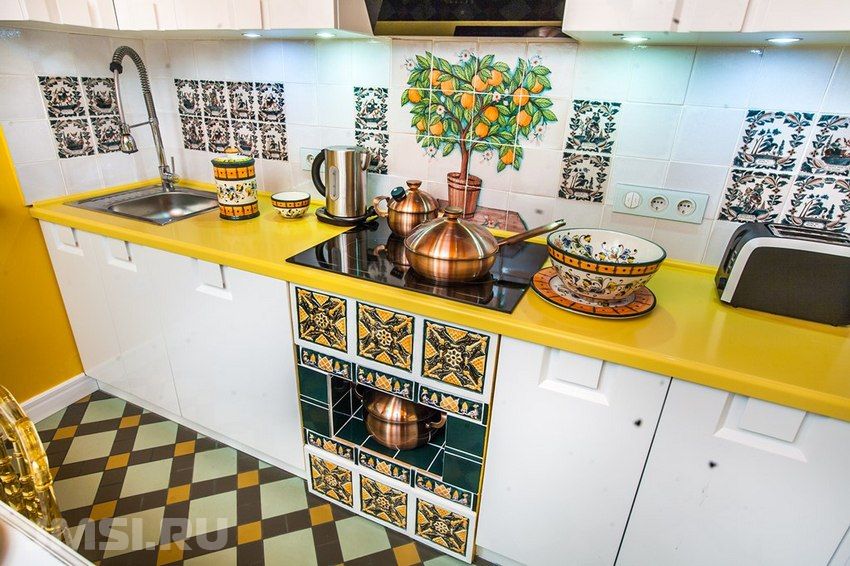
Ceramic tile is a durable material - its service life reaches 50 years
But, like any coating, the tile has a number of disadvantages. We list the difficulties associated with laying tiles, and options for their elimination:
- poor-quality laying can lead to cracks, so it is necessary to prepare an even and dry base in advance;
- tiles have poor soundproofing properties. This disadvantage can be eliminated with the help of a special layer, which is laid at the stage of creating a screed;
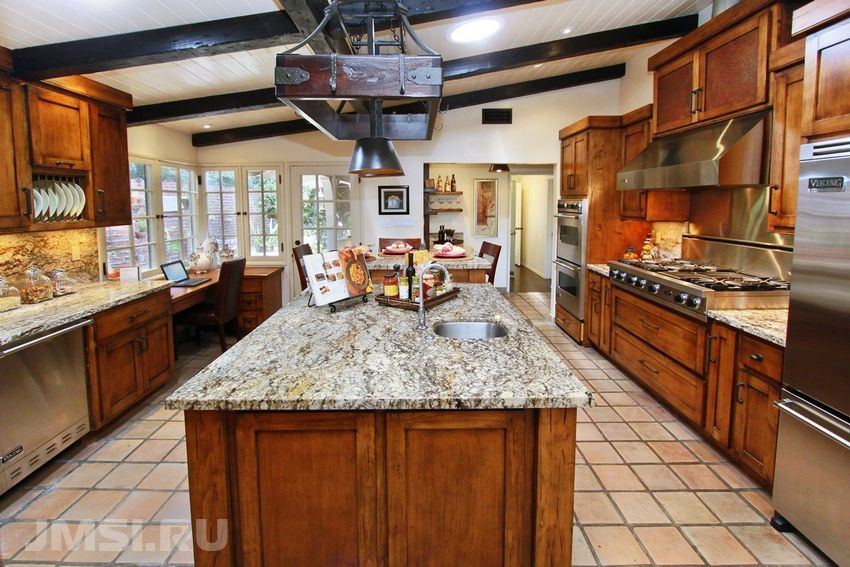
The most popular floor tile shapes are square and rectangle.
- tile is a rather cold material. But at the same time, the tile has excellent thermal conductivity, so the problem can be solved by installing a “warm floor” system;
- tile is a slippery coating, so it is better to give preference to a tile with a rough texture.
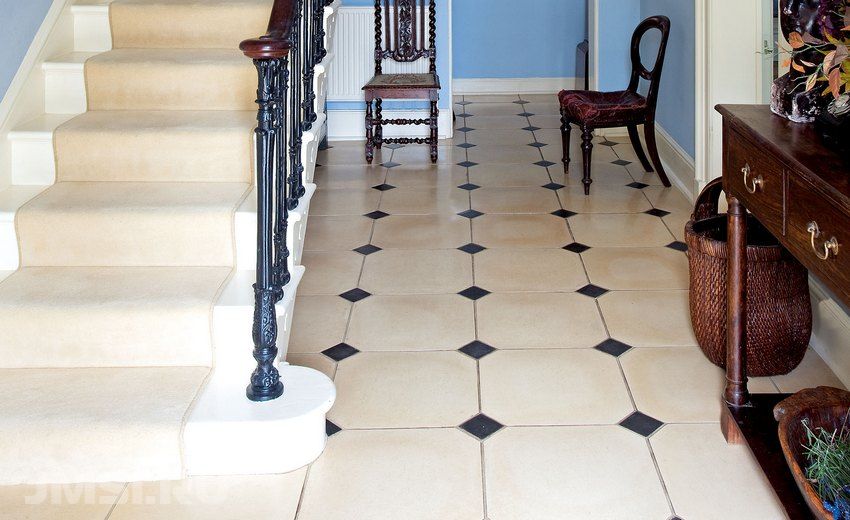
An example of the use of tiles in the interior of the hallway of a private house
Quality indicators of floor tiles in the corridor and kitchen
How to choose floor tiles not only beautiful, but also of high quality, pay attention to the markings. The manufacturer must indicate on the packaging the following indicators:
- PEI is the wear resistance level of ceramic tiles. Measured on a scale of 1 to 5 units;
- percentage of moisture resistance of the material;
- floor tile size;
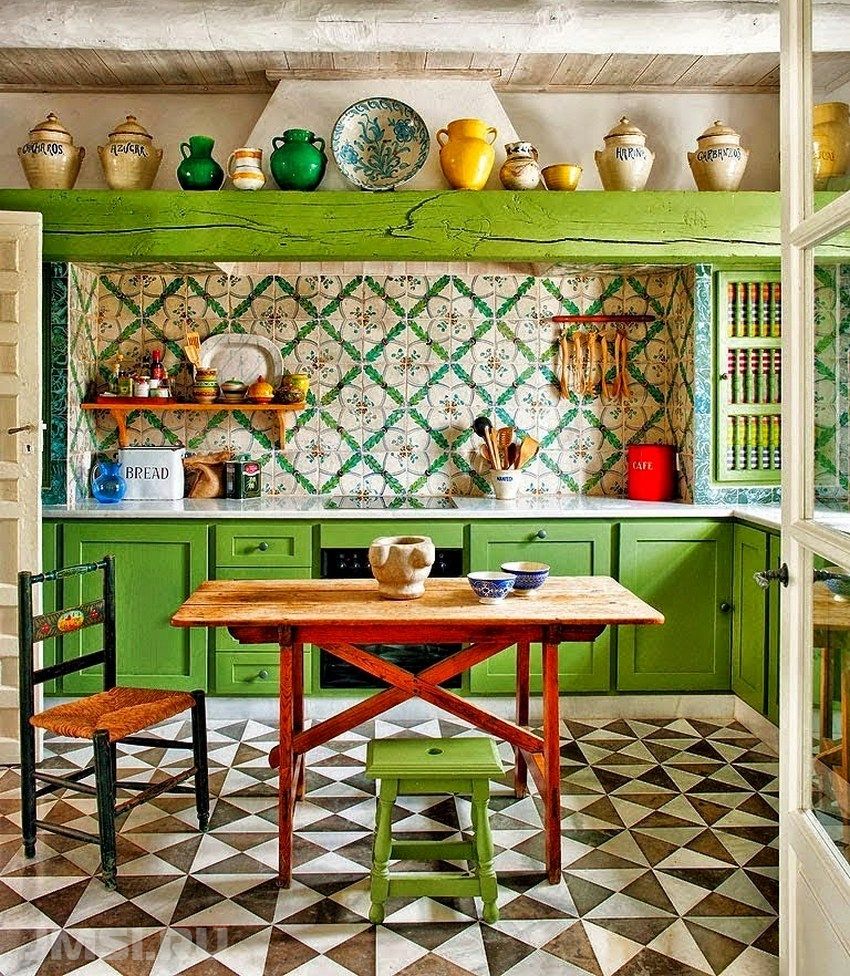
Currently, a large number of ceramic tile options are presented on the construction markets.
- material resistance to chemicals. Classification is carried out from D to AA, where D is the minimum indicator, AA is the maximum;
- the way in which the product was produced (the letter B stands for the pressing process, the letter A for extrusion);

The meaning of the pictograms on the packaging of ceramic tiles
- tile hardness. This indicator is measured on a ten-point scale of the MEP. The larger the number indicated on the package, the greater the hardness of the tile;
- tile type. It is easy to recognize by the color of the marking on the package. So, red color indicates 1 grade of material, blue color - 2 grade, green - 3. The higher the grade of the purchased product, the higher its price.
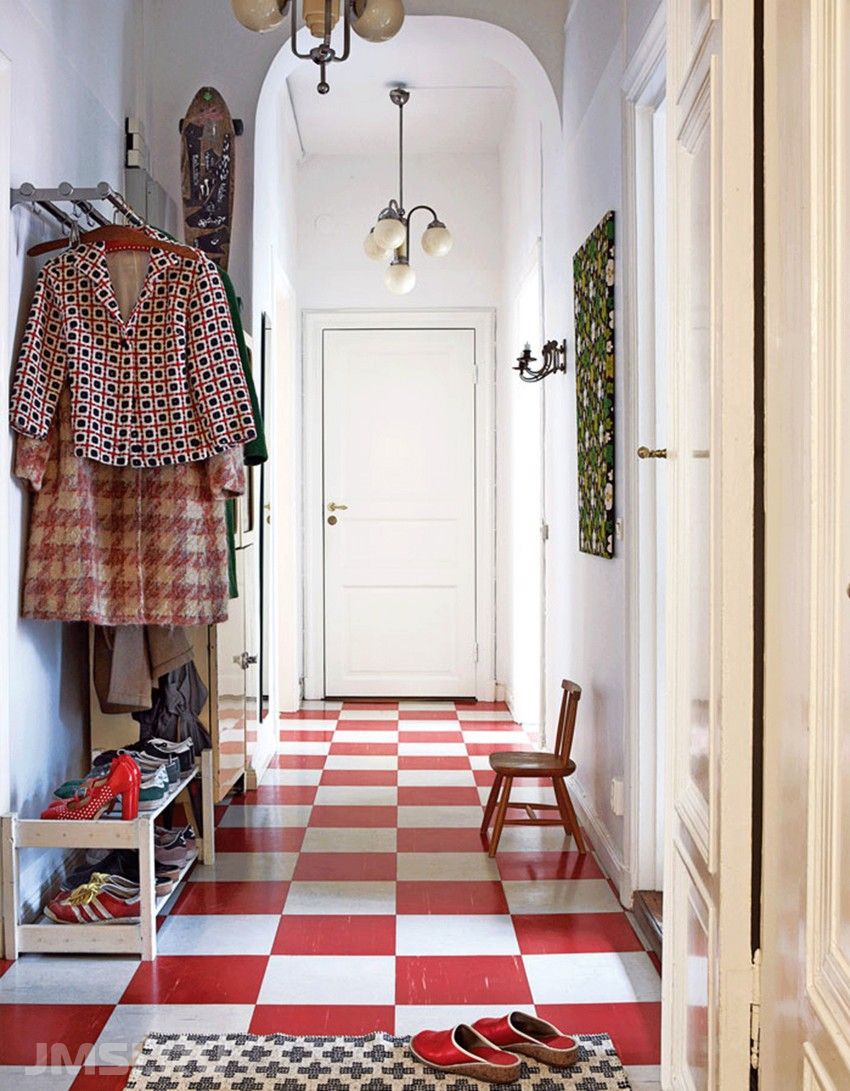
Bright accents in the design of the hallway of the apartment
Useful advice! Not worth saving choosing a tile lower grade. According to the standards, no more than 5% of defective products are allowed in a batch of the first grade, while for tiles of the third grade this figure reaches 25%.
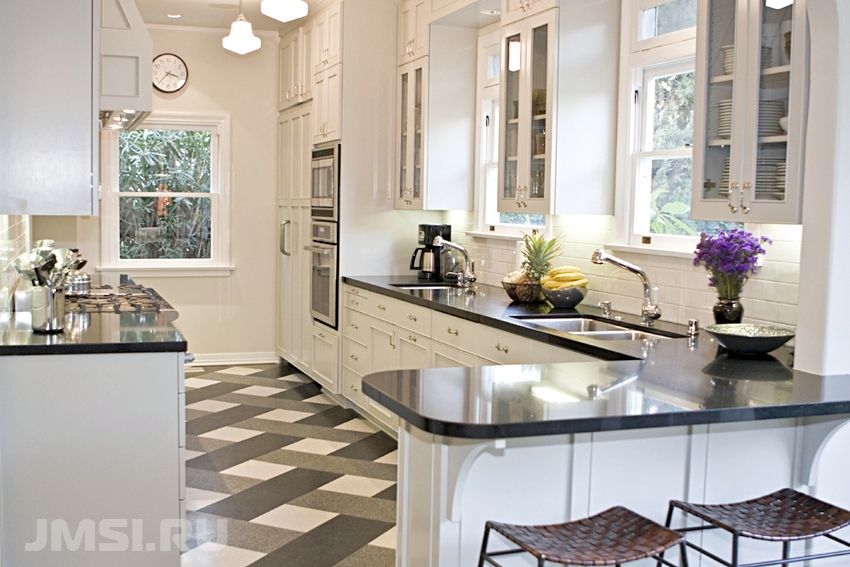
Ideal floor tiles for the corridor and kitchen: photos of the best finishes
Characteristics that a tile should have, intended as a floor covering in the corridor and kitchen:
- floor tiles in the kitchen and in the corridor must have a wear resistance class of at least PEI 3;
- the water resistance of the material should not be less than 3%;
- friction coefficient should not exceed 0.75%;
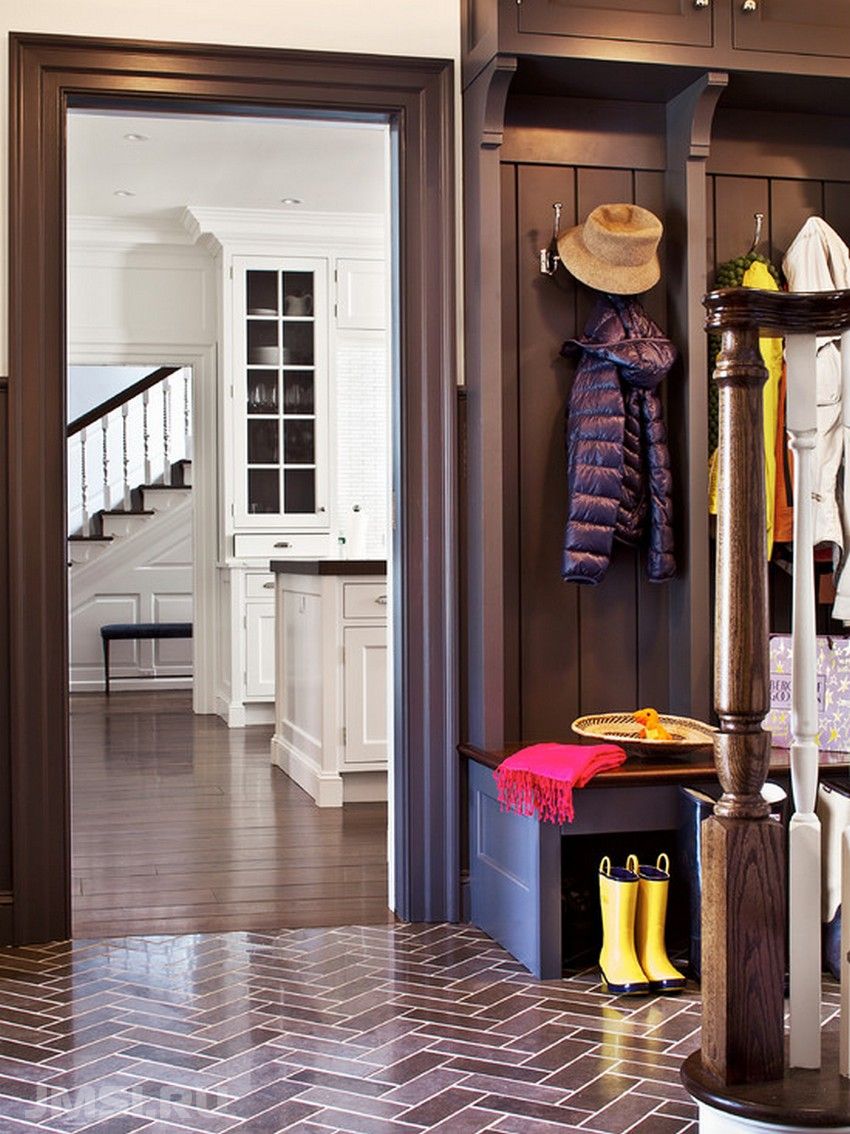
Floor tiles should harmoniously fit into the overall interior of the room.
- among manufacturers, market leaders are companies from countries such as Spain and Italy;
- it is better to choose the first type of tile;
- the size and shape of the tile can be any, depending on your preferences.
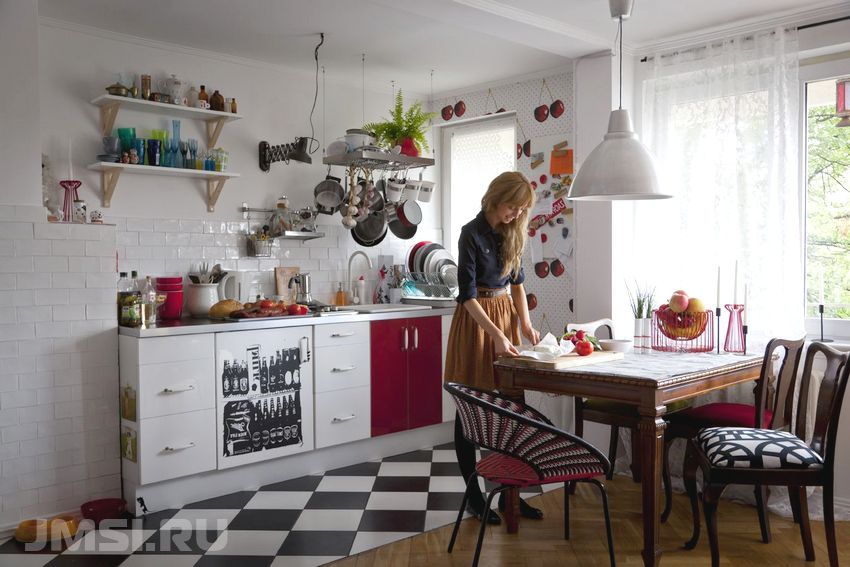
The combination of wood flooring and tiles in the design of the kitchen
Useful advice! When choosing flooring for the corridor and kitchen, it is not necessary to buy tiles with overstated technical characteristics. In practice, you are unlikely to notice a big difference, but the price of such products is much higher than for the same materials with average values.
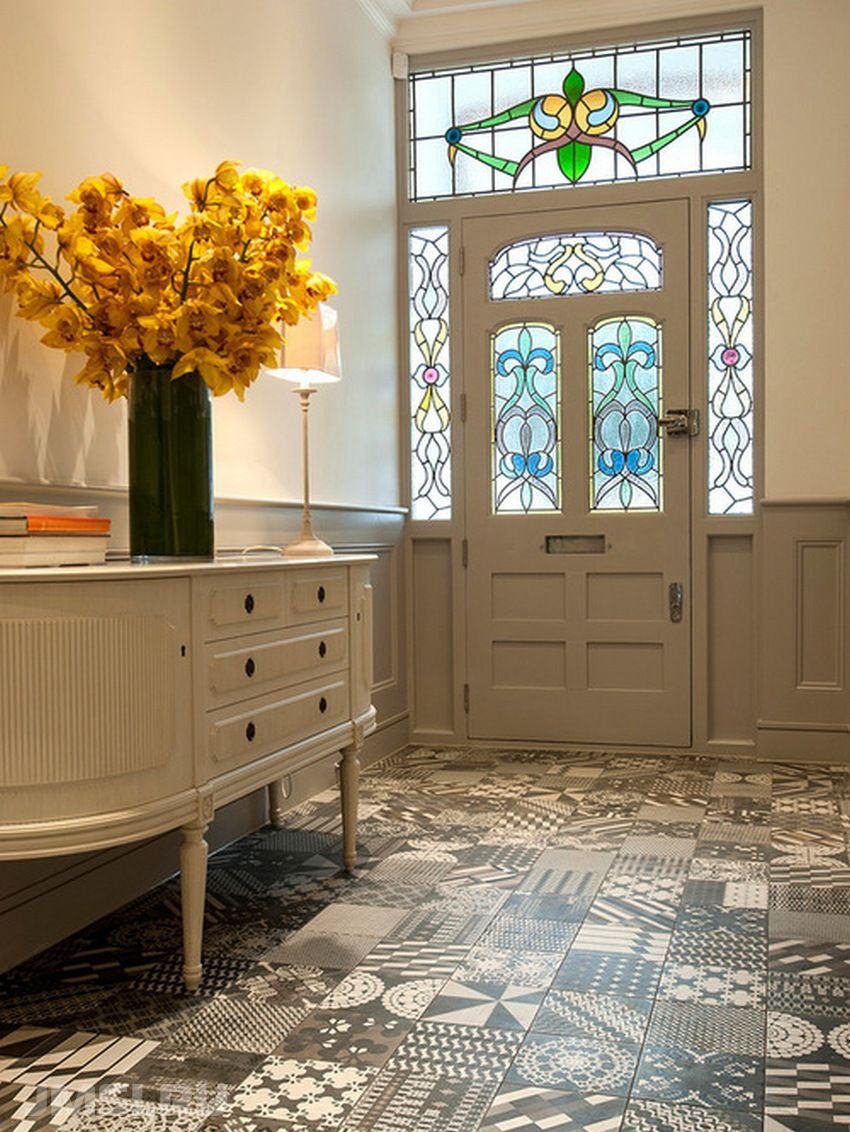
For use as a floor covering, tiles with an unusual pattern would be an interesting option.
Sizes and shapes of tiles on the floor for the kitchen and corridor: photo of interior design
The standard sizes of floor tiles are 30x30 cm, 20x30 cm, 20x25 cm, 20x20 cm, 10x15 cm, 10x10 cm. However, now you can purchase products in larger sizes - 40x40 cm, 60x100 cm, 70x120 cm.
The most common forms of tiles are square and rectangle (in this case, the aspect ratio can be absolutely any - 1/2, 1/3, etc.) Oblong “sticks” are much less common.
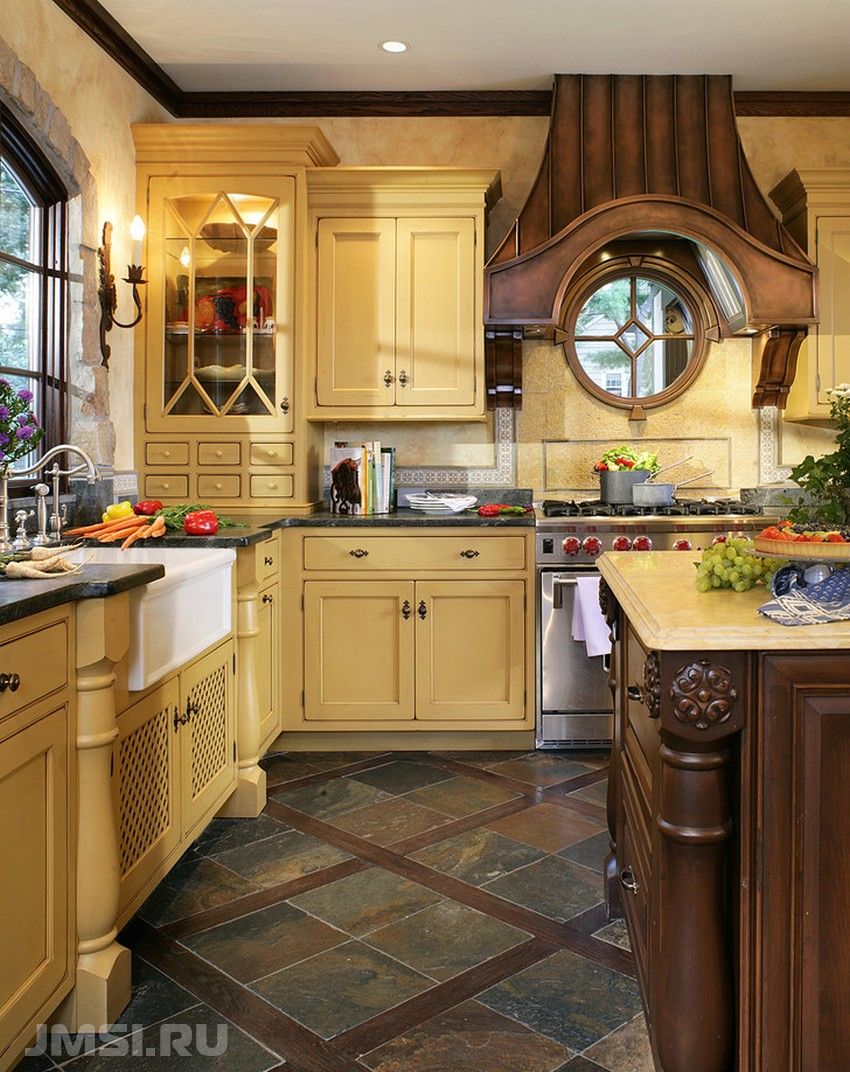
Combined floor in the interior of the kitchen of a private house
Floor tiles for hallway and kitchen. Choice of color and texture
Choosing floor tiles, you will come across a huge assortment of this finishing material. Tiles differ from each other not only in size and shape, but also in texture and color.
Which option to give preference? Here are some tips for choosing this flooring:
- for the kitchen and corridor it is better to choose tiles with a rough surface. This will reduce the level of slip, but it should be borne in mind that dust and dirt will accumulate in the recesses of an overly textured tile. At the same time, products with a glazed surface have greater moisture resistance and increased strength. Perfectly illustrates how such a tile looks like in the corridor on the floor of the photo available on the Internet;
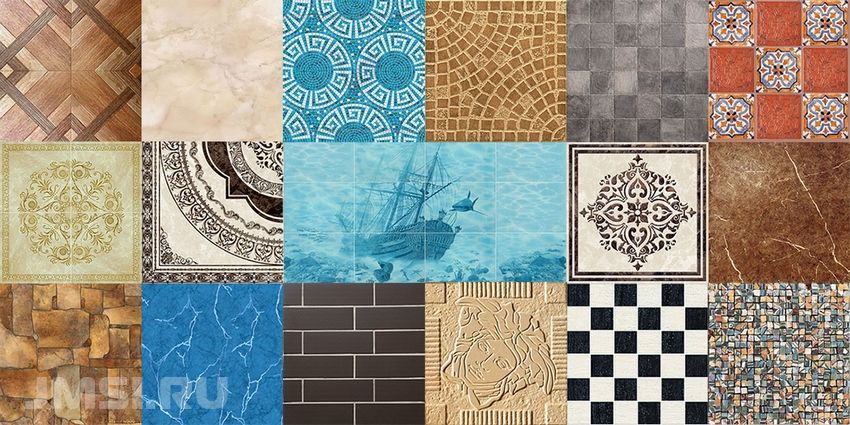
A variety of shapes, patterns and different sizes of tiles will create a unique interior in the room.
- When choosing the color of floor tiles, it is important to consider the overall interior design. Most often, preference is given to light-colored tiles with a monochrome surface. To do this, you can use not only ceramics, but also porcelain stoneware (you can get acquainted with the range of porcelain stoneware tiles on the partner's website http://www.ceramomaster.ru/italon.html);
- a light floor can significantly expand the room visually;
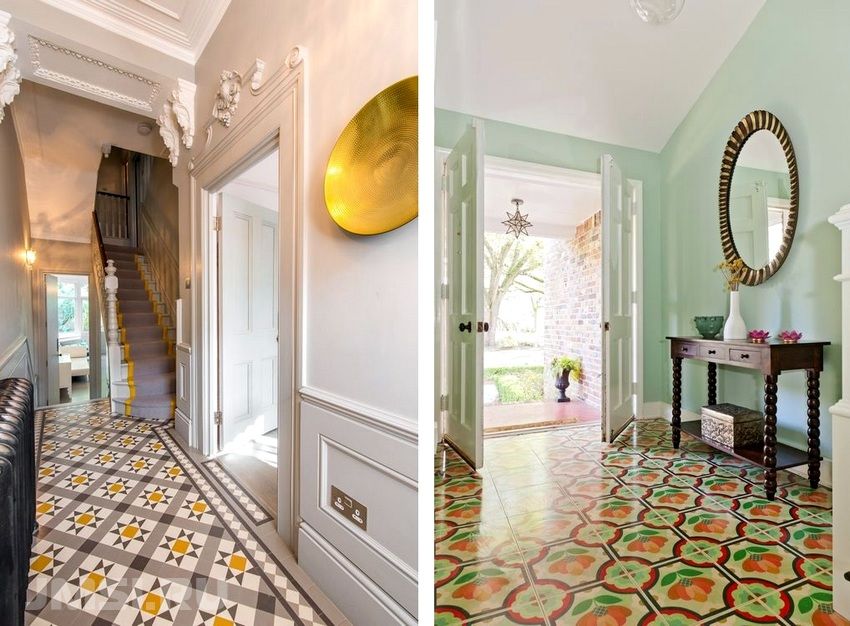
The bright colors of the tiles will delight the eye and improve mood.
- floor tiles dark color is acceptable only in a spacious hallway (kitchen), while requiring light shades for furniture and other interior details;
- keep in mind that black and white tiles are very easily soiled options, but combining tiles of these colors is an option that does not go out of fashion. They put such a combination in a checkerboard pattern or rhombuses diagonally;
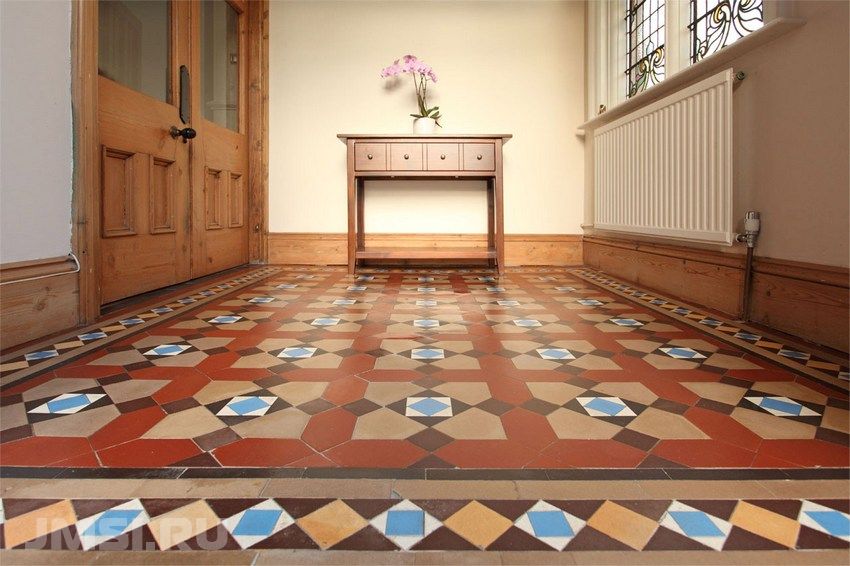
Ceramic tiles are environmentally friendly and fire resistant
- The most successful colors for finishing these rooms are gray, brown and beige;
- a matte surface is more practical than a glossy one. On such a floor, dirt and scratches are less noticeable;
- tiles imitating natural stone will look very stylish. This tile is suitable for creating a classic or "rustic" interior;
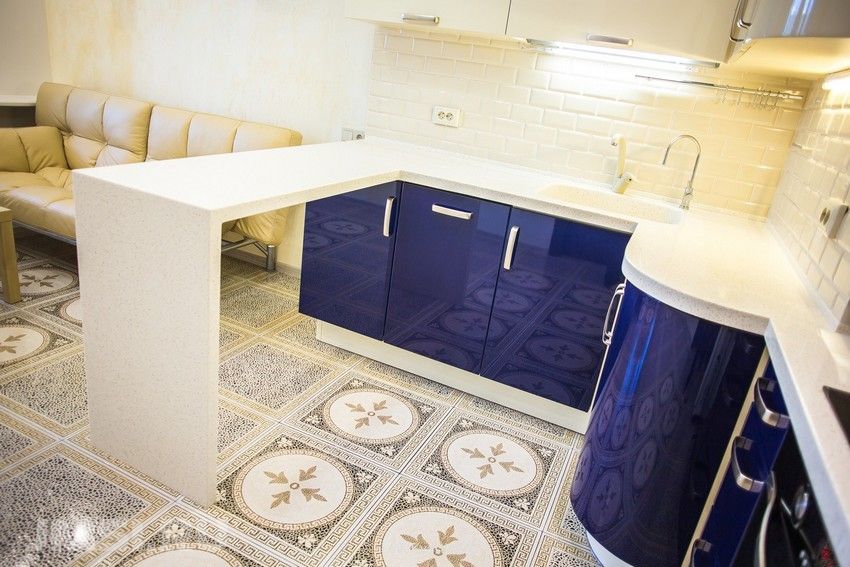
Ornamented ceramic tiles were used as flooring in the kitchen design.
- wood floor tiles are very popular. Such a tile is universal for an interior decorated in any architectural style;
- medium-sized tiles with repeating patterns will allow you to visually make the room smaller and cozier.

Floor tiles are great for rustic interiors
Tiles on the floor for the corridor and kitchen. Photo illustrations of interior design options
The color of the selected flooring directly depends on whether there are windows in the room being designed and where they go. So, if there are no windows in the corridor or they are facing north, then it is better to give preference to a plain light tile. A dark coating will take too much light.
If the windows in the room face south, you can use more saturated colors.
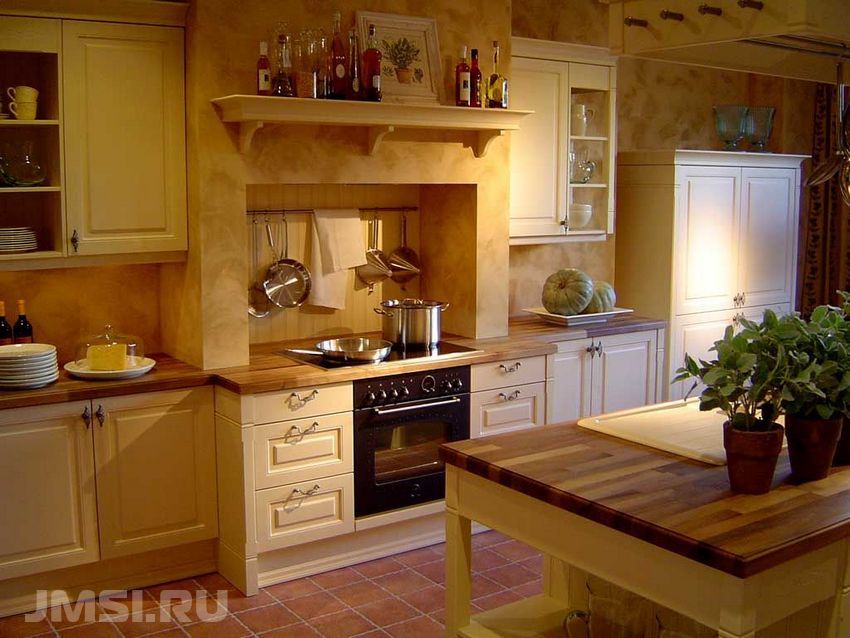
For a small kitchen, it is better to use a medium or small tile.
At choosing the size and shape of the tiles it is important to consider the area of \u200b\u200bthe room. For a spacious kitchen or hallway, large square tiles are perfect, and, for example, using rectangular tiles, you can visually lengthen a short corridor. Looking through the photo of floor tiles for the hallway, you will see examples of such work with space.
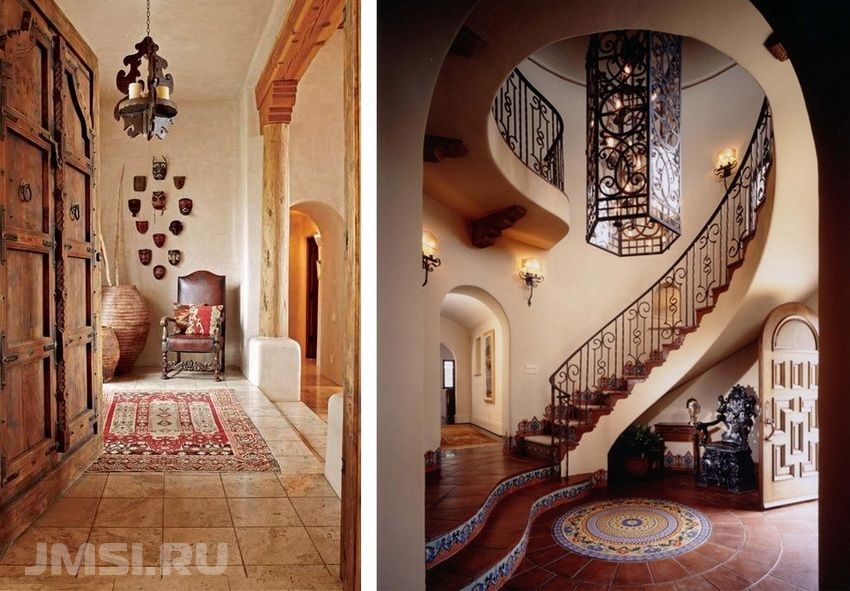
With the help of floor tiles you can create a unique interior of the room
For design with ethnic motifs, a variety of patterns and ornaments are perfect, in rooms decorated in the style of minimalism, it is preferable to use tiles with a monochrome surface, and in a modern interior, bright colored floors will be appropriate.
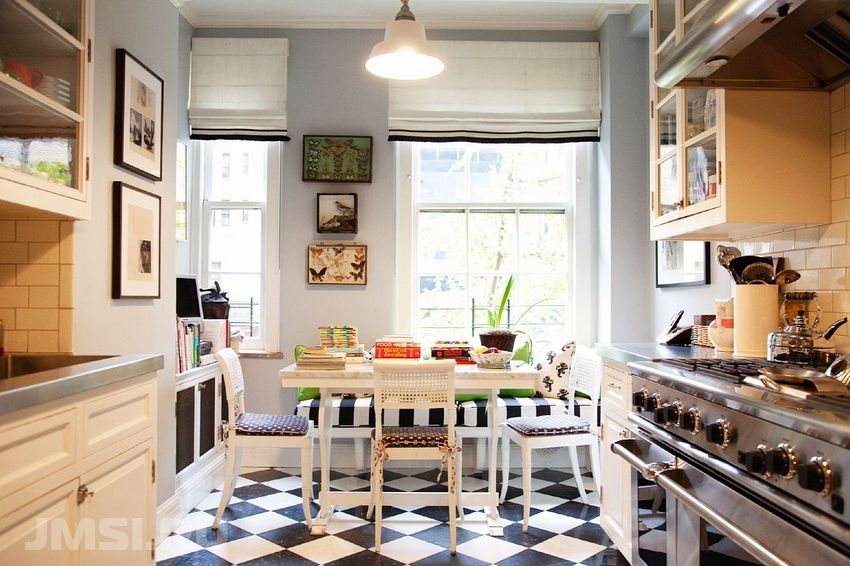
The ideal solution would be to install a "warm floor" system under ceramic tiles
Useful advice! In order for the floor not to look monotonous and boring, you can combine large tiles and small decorative tiles with an interesting pattern. Such small original inserts can be made both in the center of the room, and distributing them evenly between uniformly decorated areas.
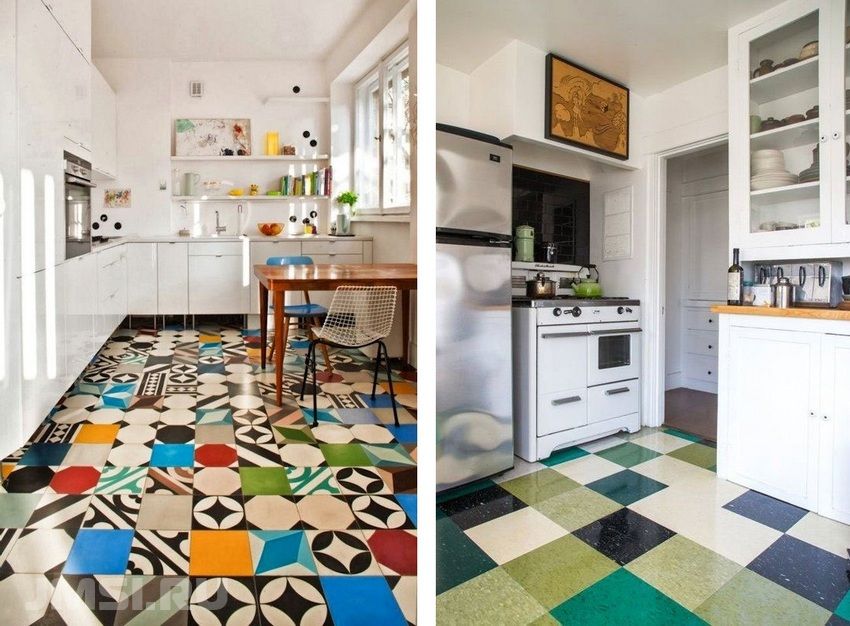
Various options for using multi-colored floor tiles in kitchen design
How to put tiles on the floor with your own hands
The service life of the flooring directly depends on how well you prepare the base. The concrete floor must be leveled before laying the tiles. To do this, use a special composition, after which it is necessary to check with a level. After the solution has dried, a primer is applied to a clean and dry surface.
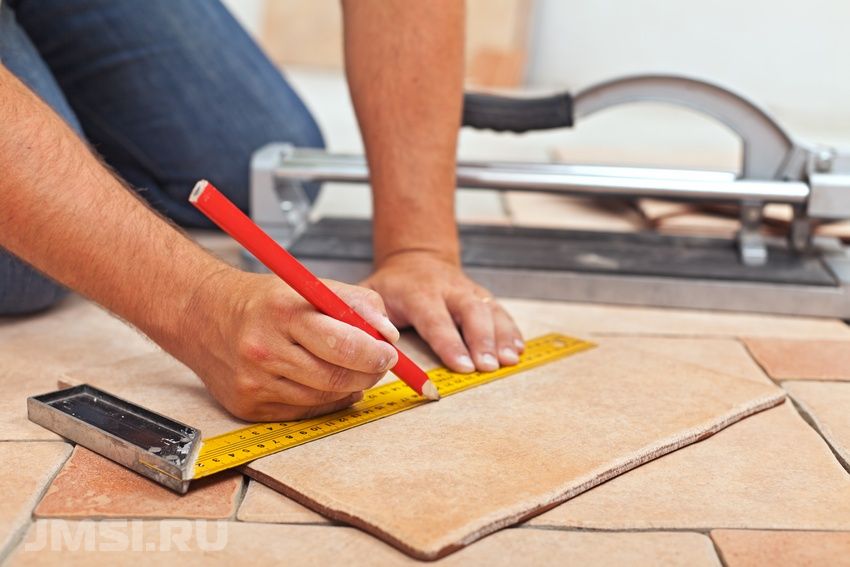
Ceramic tiles are quite easy to lay on the floor with your own hands.
Before starting the laying of tiles, markings are made - this takes into account the size of the tiles. But some masters recommend simply starting from the corner. After mixing a special adhesive solution, apply it to the surface with a smooth spatula. After that, the adhesive must be leveled with a notched trowel.
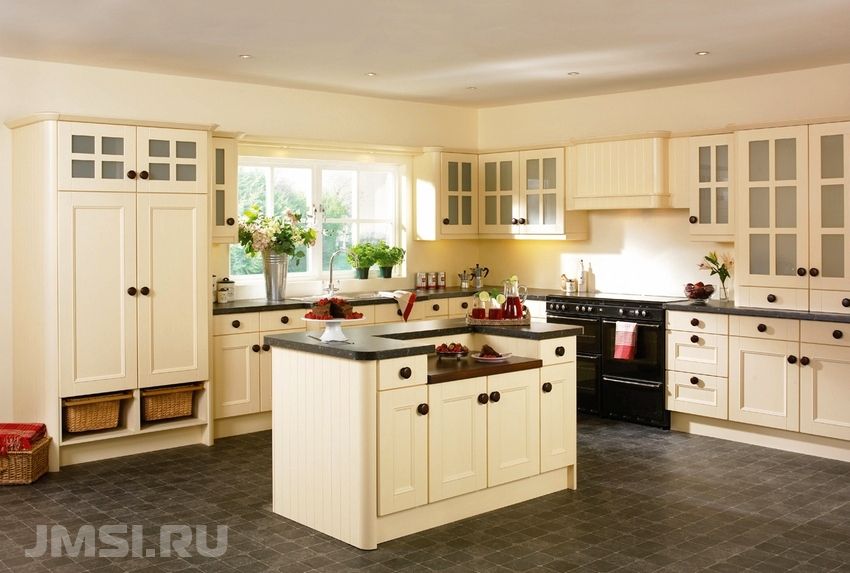
Features of ceramic tiles are high hygiene and ease of maintenance.
Making your own tile adhesive is easy. To do this, use a construction mixer or a drill with a special nozzle. Dilute the dry mixture in water according to the instructions and mix thoroughly. The finished product should be left to stand for 15 minutes, and then mix well again. This will give you a homogeneous solution.
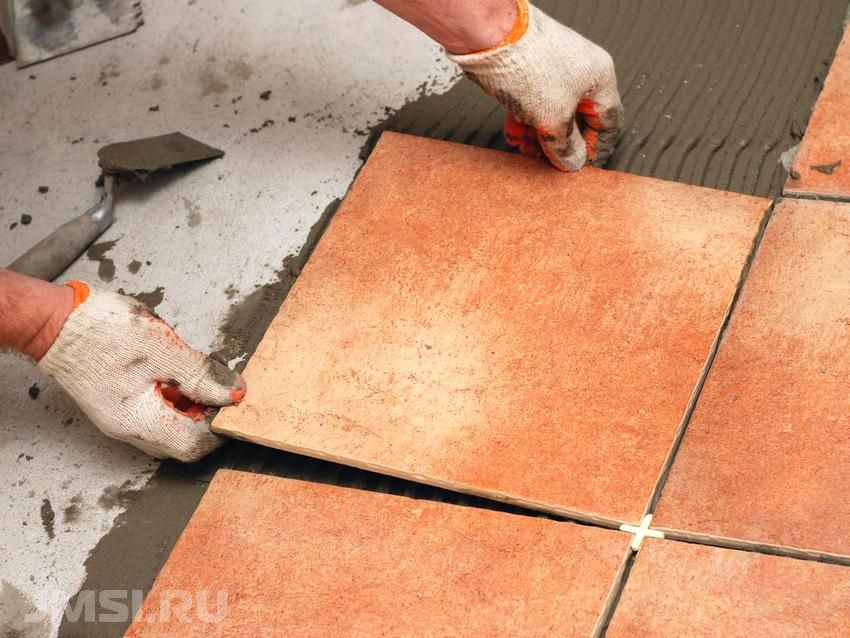
Self-laying ceramic tiles on the floor
Useful advice! Do not immediately knead a large amount of glue, otherwise it may begin to dry out even before it is used. It is better to repeat the process 2-3 times.
To apply tile adhesive, it is very convenient to use a notched grater with one smooth side. The finished solution is applied to the floor surface over an area of \u200b\u200bnot more than one square meter and on each tile separately. It is important not to forget that the direction of the grooves on the tile and on the floor should be different. This contributes to better adhesion of the glue after drying.
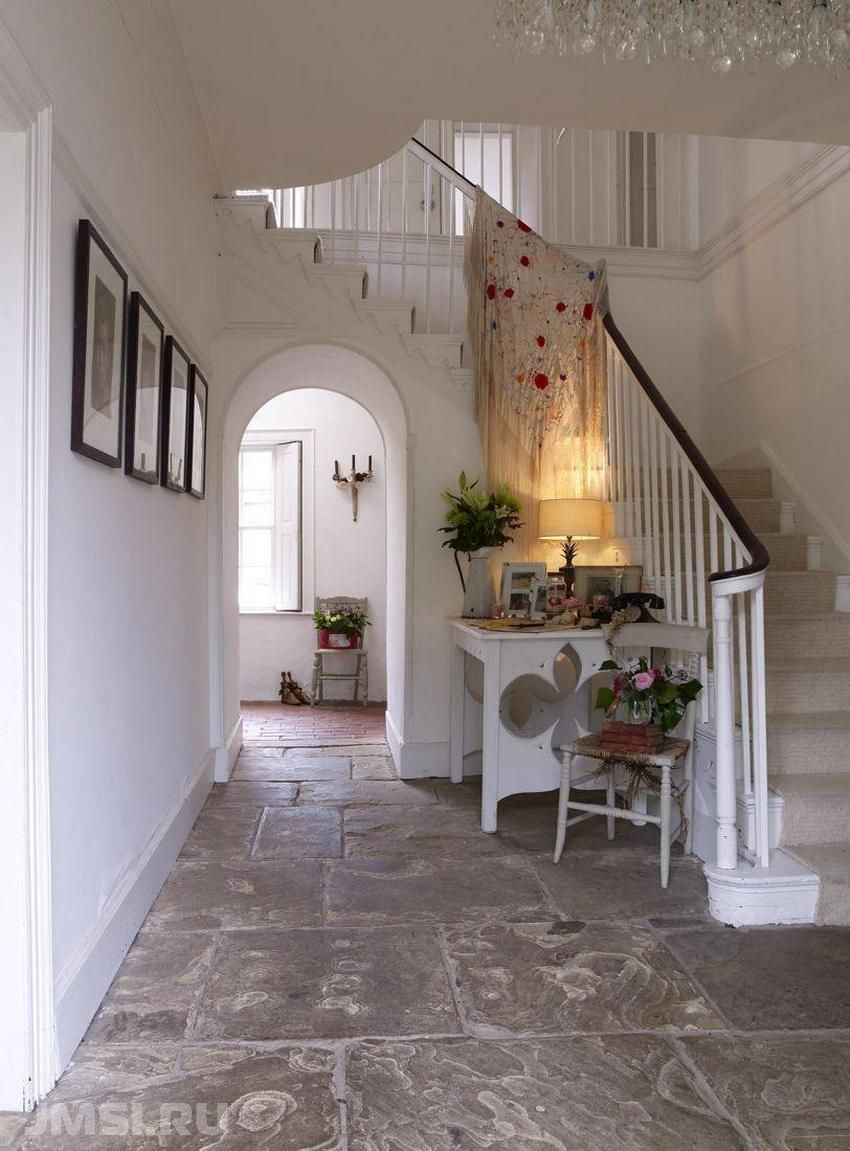
Stone imitating tiles in the interior of the hall
Special distance crosses will help you make the seams between the tiles even and parallel to each other. Next, the already laid tiles are leveled by gently tapping with a rubber mallet.
After the solution has completely dried, it remains only to wipe and process the tile joints. To do this, use a rubber spatula.
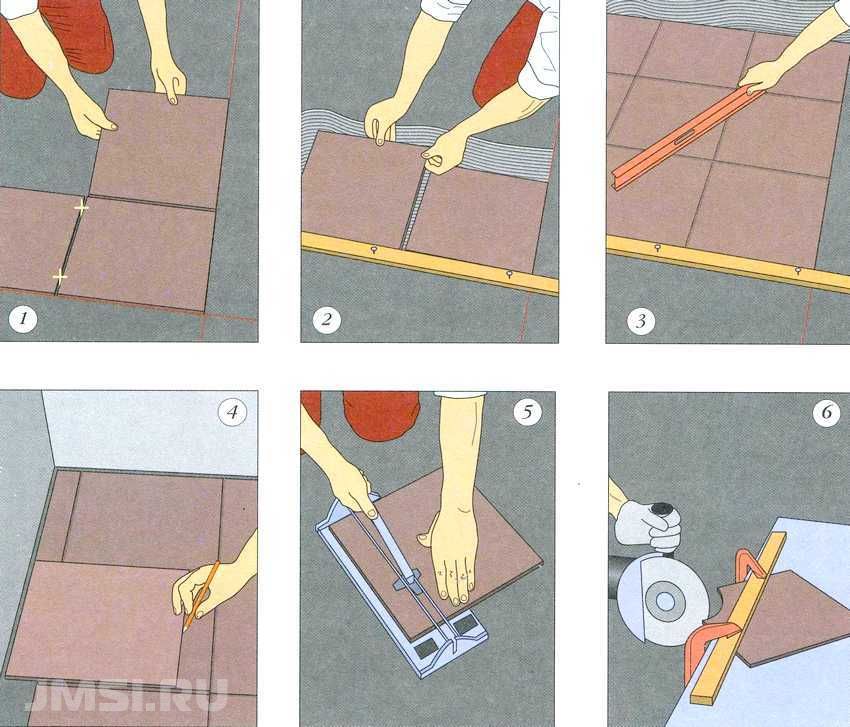
Procedure for laying floor tiles
Useful advice! Over the next two or three days, the seams must be moistened with water. This contributes to their uniform drying and prevents deformation.
On one's own select and install floor tiles to the kitchen and the corridor is quite possible. Using the advice of experts presented in the article, you can realize any of your ideas by creating a unique interior.